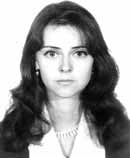Contents: 2024 | 2023 | 2022 | 2021 | 2020 | 2019 | 2018 | 2017 | 2016 | 2015 | 2014 | 2013 | 2012 | 2011 | 2010 | 2009 | 2008 | 2007 | 2006 | 2005 | 2004 | 2003 | 2002 | 2001
2003,13
Numerical study of inverse extreme problems of active sound control in two-dimensional multimode waveguides
language: Russian
received 05.06.2003, published 26.06.2003
Download article (PDF, 290 kb, ZIP), use browser command "Save Target As..."
To read this document you need Adobe Acrobat © Reader software, which is simple to use and available at no cost. Use version 4.0 or higher. You can download software from Adobe site (http://www.adobe.com/).
ABSTRACT
Linear and nonlinear problems of active sound control in waveguides have been much investigated in the last years. Computing experiments for inverse extreme problems were carried out for waveguides of small or average depth, where the number of normal modes is up to 50–60. At the same time in practice it is necessary to deal with deep waveguides, where the number of propagating modes can be from several hundred to several thousand.
Nonlinear approach is preferable for the problem of active sound control. However nonlinear problem in multimode waveguide requires a great deal of computation.
In the present work the inverse linear problem of active sound control in two-dimentional multimode waveguide is considered. The problem consists in finding the complex intensities of the compensating antenna elements from the condition of minimal power of the total acoustic field in the far zone of the waveguide. The numerical algorithm based on the regularized quadratic algorithm for minimization with respect to complex intensities of desired sources is applied to the decision of linear problems in waveguide. Sound control problems employ compensating antenna arrays of two types: linear (vertical, inclined and horizontal) and curvilinear. Results of computing experiments are discussed. It is shown that full suppression of the power of the primary source can be achieved by solving the linear problem for the specified configurations of the compensating antenna.
12 pages, 5 figures
Сitation: T. S. Komashinskaya. Numerical study of inverse extreme problems of active sound control in two-dimensional multimode waveguides. Electronic Journal “Technical Acoustics”, http://www.ejta.org, 2003, 13.
REFERENCES
1. Benzaria E., Martin V. Secondary source location in active noise control: selection or optimization? J. Sound Vibr. 1994. V. 173. № 1. P. 137–144.
2. Тютекин В. В., Модель плоской активной звукопоглощающей системы. Акустический журнал. 1997. Т.43. Вып. 2. С. 238–243.
3. Алексеев Г. В. Нелинейные задачи активного гашения звука в двумерных слоисто-неоднородных волноводах. Акустический журнал. 1997. Т. 43. № 6. С. 737–743.
4. Алексеев Г. В., Комаров Е. Г. Нелинейные обратные задачи активного управления акустическими полями в двумерных волноводах. Доклады РАН. 1998. Т. 358. № 1. C. 27–31.
5. Алексеев Г. В., Комашинская Т. С. Численный анализ обратных экстремальных задач излучения звука в двумерных глубоких волноводах. Препринт. Владивосток: Дальнаука, 2000. 56 с.
6. Алексеев Г. В., Комашинская Т. С. Численный анализ обратных задач активной минимизации звуковых полей в глубоких плоских волноводах. Акустика неоднородных сред. Новосибирск: Изд-во ИГ СО РАН. 2001. Вып.117. С. 3–10.
7. Алексеев Г. В., Комашинская Т. С. Об активной минимизации потенциальной энергии звукового поля в двумерном многомодовом волноводе. Акустический журнал. 2003. Т. 49. № 2. C. 195–202.
8. Алексеев Г. В. Математические основы акустики океана. Владивосток. Изд-во Дальневост. ун-та, 1988. 228 с.
 |
Komashinskaya Tatyana – a lecturer at the department of informatics and computer engineering at the Ussuriisk State Teacher's Training College (Primorskiy region, Russia). Scientific areas: noise and vibration control, mathematical modelling. e-mail: tskom(at)wom.ru |
